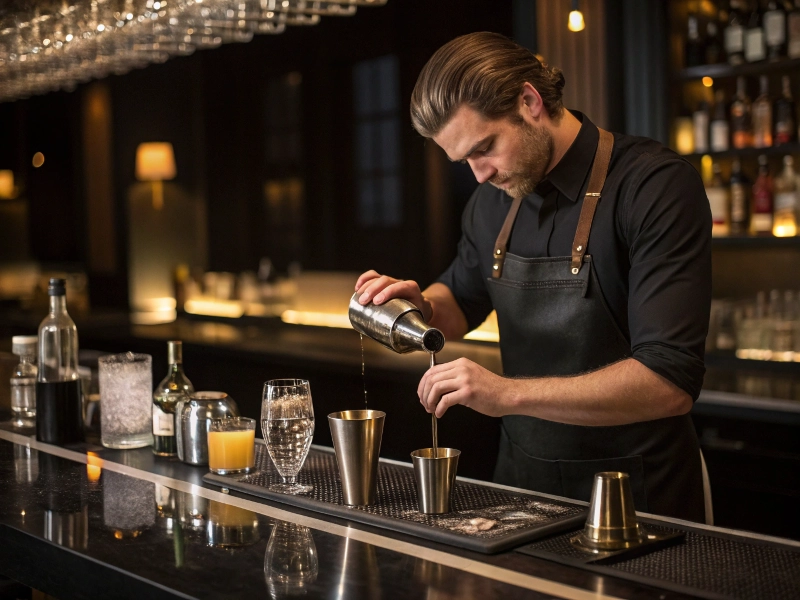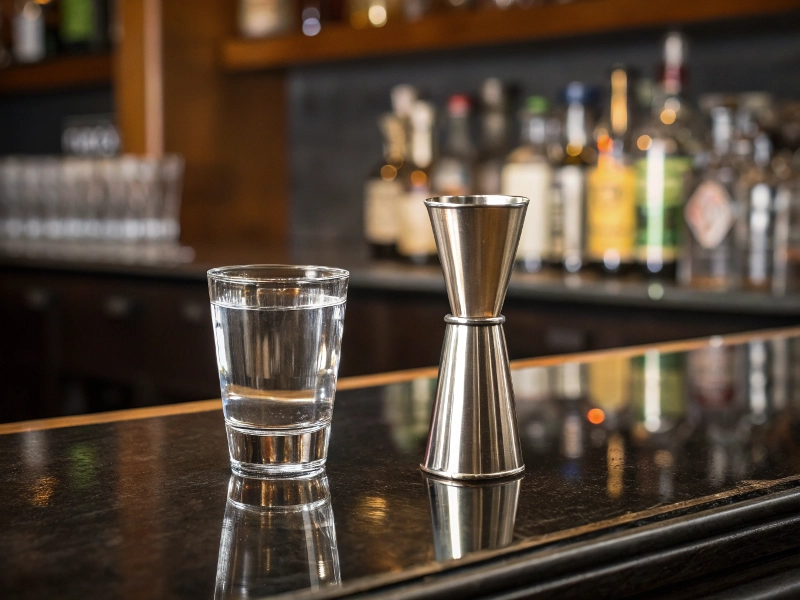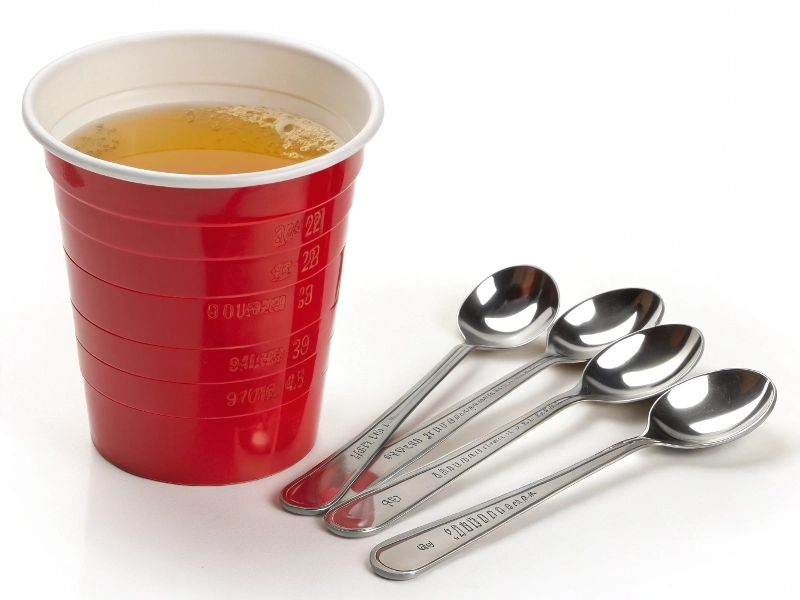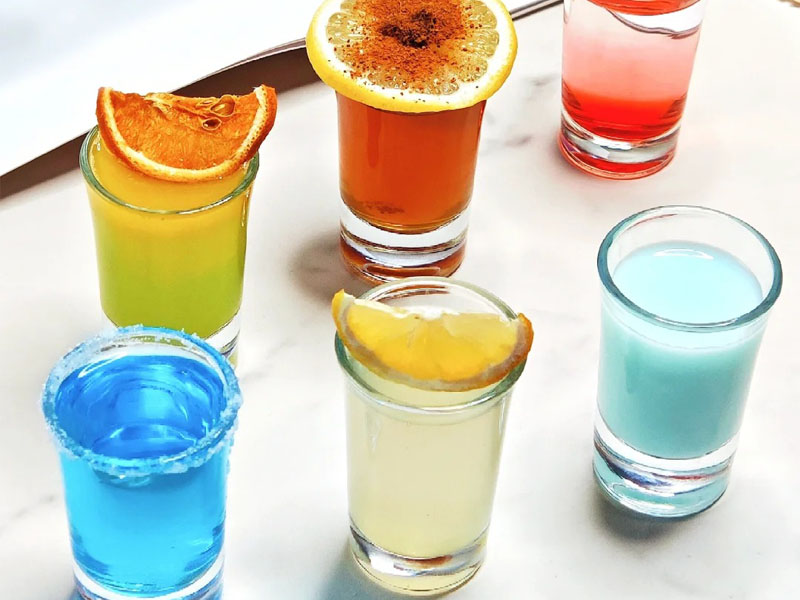Introduction
Picture yourself at a lively bar, ordering a round of shots, or mixing a cocktail at home for friends, only to find the “shot” you poured tastes off or hits harder than expected. Shot sizes vary widely—from a modest 0.67 ounces in Germany to a hearty 2 ounces in Japan—causing confusion for home mixologists and professional bartenders alike. This inconsistency, shaped by cultural habits and regional rules, can throw off recipes or lead to unintended overindulgence.
So, how many ounces are in a shot glass, and how can you master measurements for flawless cocktails?
Shot sizes typically span 0.67 to 2.02 ounces globally, with the U.S. standard at 1.5 ounces (44.36 ml), but getting it right depends on tools and context. In the U.S., bartenders usually pour 1.5 ounces, though dive bars might skimp with 1 ounce, and double shots can hit 3 ounces. Abroad, Japan’s larger pours foster social drinking, while the U.K.’s strict 25 ml (0.84 oz) shots reflect regulation. Home bartenders can rely on jiggers for precision or use three tablespoons as a quick hack, while professionals need accurate pours to maintain flavor and safety. “Overpouring can ruin a cocktail’s balance and get your guests drunker than they planned,” warns mixologist Sarah Mitchell, emphasizing the stakes of precision.
This guide delivers actionable knowledge to navigate shot sizes, tools, and global differences, empowering you to mix cocktails with confidence. Whether you’re a home bartender, professional, or global traveler, you’ll find practical solutions for consistent results. Key questions:
- What is the standard shot size in the U.S. and globally?
- Why is precise shot measurement critical for cocktails?
- How do shot glasses compare to jiggers and other tools?
- How can you measure a shot without specialized tools?
- What are easy shot recipes for home and professional bartenders?
- How do cultural and regional differences shape shot sizes?
What Is the Standard Shot Size in the U.S. and Globally?
Ever poured a shot and wondered if it matches the recipe? Shot sizes differ worldwide due to regulations and cultural norms, with the U.S. standard at 1.5 ounces (44.36 ml), while global variations range from 0.67 ounces in Germany to 2.02 ounces in Japan. Understanding these standards ensures accurate cocktails and responsible drinking, whether you’re at home or in a bar.
| Country | Shot Size (oz) | Shot Size (ml) |
|---|---|---|
| U.S. | 1.5 | 44.36 |
| U.K. | 0.84 | 25 |
| Japan | 2.02 | 60 |
| Germany | 0.67 | 20 |
| Poland | 1.52 | 45 |
| Canada | 1.0 | 30 |
- U.S. shots set the benchmark at 1.5 ounces: Most American bars pour 44.36 ml, though cost-conscious venues may serve 1 ounce.
- Global sizes vary by culture and rules: The U.K.’s 25 ml reflects strict laws, while Japan’s 2.02 oz encourages social toasts.
- Conversions simplify home mixing: A 1.5-ounce shot equals 3 tablespoons or 44.36 ml, handy for quick measurements.
- Regulations enforce consistency: Utah mandates 1.5 ounces, and Norway caps shots at 40 ml to control consumption.
“A standard shot in the U.S. is 1.5 ounces, but globally, it’s a mixed bag—Japan’s 2-ounce pours are generous, while Germany’s 0.67 ounces feel stingy.” — Hiroshi Tanaka, Bar Consultant
With shot size standards clear, let’s explore why getting those measurements right is so crucial.
Why Is Precise Shot Measurement Critical for Cocktails?
Have you ever sipped a cocktail that tasted too strong or left you woozy? Precise shot measurement ensures balanced flavors and safe drinking, avoiding the pitfalls of overpouring. A bartender once poured a 3-ounce shot instead of 1.5 ounces, turning a refreshing margarita into an overpowering drink that left a guest unsteady. Accurate pours keep cocktails enjoyable, control alcohol levels, and save bars from costly waste.

- Accurate pours preserve flavor: A 3-ounce shot instead of 1.5 ounces disrupts a cocktail’s intended taste.
- Overpouring risks overindulgence: Excess liquor spikes alcohol content, leading to unexpected intoxication.
- Precision boosts bar profits: Consistent pours prevent liquor waste, protecting professional budgets.
- Sugary mixers amplify hangovers: Liqueurs in cocktails increase dehydration, making precise measurements vital.
“Overpouring can ruin a cocktail’s balance and get your guests drunker than they planned.” — Sarah Mitchell, Mixologist
To calculate a cocktail’s alcohol content, multiply each ingredient’s volume by its alcohol by volume (ABV) percentage. For example, a Spicy Margarita with 1.5 ounces of 40% ABV tequila and 0.5 ounces of 20% ABV liqueur totals 27 ml of pure alcohol, equivalent to about two standard shots. With precision’s importance in mind, let’s examine the tools that make it possible.
How Do Shot Glasses Compare to Jiggers and Other Tools?
Choosing the right tool can make or break your cocktail—how do shot glasses stack up against jiggers? Shot glasses, holding 1 to 1.5 ounces, are built for serving quick drinks, while jiggers, with dual-sided 1.5-ounce and 1-ounce measurements, excel at precise pours. Alternatives like tablespoons or solo cups offer flexibility for home bartenders, but jiggers remain the top choice for consistency.

| Tool | Capacity | Best Use |
|---|---|---|
| Shot Glass | 1–1.5 oz (2–3 oz for shooters) | Serving drinks |
| Jigger | 1.5 oz / 1 oz | Precise measuring |
| Tablespoon | 3 Tbsp = 1.5 oz | Home measurement hack |
| Red Solo Cup | First line ≈ 1.5 oz | Casual measurement |
- Shot glasses serve, don’t measure: Holding 1-1.5 ounces, they’re ideal for drinking but less reliable for precision.
- Jiggers ensure exact pours: Dual-sided at 1.5 oz and 1 oz, they’re essential for professional-grade cocktails.
- Alternative tools fill gaps: Three tablespoons or a solo cup’s first line approximate 1.5 ounces for casual use.
- Invest in a jigger for consistency: Use jiggers for precise cocktails, saving shot glasses for serving.
“Jiggers are the gold standard for precision; shot glasses are more for serving than measuring.” — Michael Chen, Bartending Instructor
With tools clarified, let’s explore how to measure shots when you don’t have specialized equipment.
How Can You Measure a Shot Without Specialized Tools?
No shot glass or jigger? You can still mix a great cocktail—how do you measure a shot with everyday items? Creative hacks like three tablespoons for a 1.5-ounce shot or a six-second free pour with practice let home bartenders achieve decent accuracy. A student once used a red solo cup’s first line to pour shots for a party, keeping the vibe lively without fancy gear. These methods keep your cocktails on point, even without bar tools.

| Method | Measurement | Notes |
|---|---|---|
| Tablespoons | 3 Tbsp = 1.5 oz | Simple kitchen tool |
| Red Solo Cup | First line ≈ 1.5 oz | Quick, casual option |
| Free Pour (with spout) | 6 seconds = 1.5 oz | Requires practice |
| Water Displacement | Coins displace 1.5 oz | Creative but complex |
- Three tablespoons match 1.5 ounces: A kitchen staple offers a quick way to measure a standard shot.
- Solo cups are a party hack: Pour to the first line for roughly 1.5 ounces, ideal for casual settings.
- Free pouring needs skill: Count six seconds with a pour spout for a 1.5-ounce shot after practice.
- Practice with water for mastery: Use a water-filled bottle to perfect free pouring or stick to tablespoons.
“Free pouring looks flashy, but count to six seconds with a pour spout for a perfect 1.5-ounce shot.” — Michael Chen, Bartending Instructor
“Red solo cups work in a pinch—just pour to the first line for about 1.5 ounces.” — Alex Nguyen, Amateur Mixologist
Now that you can measure shots, let’s try some recipes to showcase your skills.
What Are Easy Shot Recipes for Home and Professional Bartenders?
Want to dazzle with a round of shots? Simple recipes like Lemon Drop and Ranch Water deliver bold flavors for home and professional bartenders, while low-sugar options cut hangover risks. A home mixologist once served Ranch Water at a summer party, earning raves for its crisp taste. With precise measurements, these recipes ensure delicious, worry-free drinks.

Lemon Drop: A Refreshing Classic
- Ingredients: 1.5 oz vodka, 0.5 oz lemon juice, 0.25 oz sugar syrup.
- Why it works: Its bright, tangy flavor is easy to mix and universally loved.
Ranch Water: Light and Low-Sugar
- Ingredients: 1.5 oz tequila, 0.5 oz lime juice, top with soda water.
- Why it works: Minimal sugar reduces hangover risks, ideal for health-conscious drinkers.
B-52: A Layered Showstopper
-
Ingredients: 0.5 oz Kahlúa, 0.5 oz Baileys, 0.5 oz Grand Marnier.
-
Why it works: Layered for visual appeal, it’s a pro-level shot with rich flavors.
-
Start with low-sugar shots: Mix Ranch Water for a refreshing, hangover-friendly drink at home or in a bar.
“Low-sugar recipes like Ranch Water keep hangovers at bay while still tasting great.” — Sarah Mitchell, Mixologist
“I stick to simple shots like Lemon Drop because they’re easy to measure at home.” — Emily Carter, Home Bartender
With recipes mastered, let’s explore how global cultures influence shot sizes.
How Do Cultural and Regional Differences Shape Shot Sizes?
Traveling abroad and ordering a shot can surprise you—why do shot sizes vary so much? Cultural norms and regulations define shot sizes, from Japan’s generous 2-ounce pours to the U.K.’s regulated 25 ml shots. A traveler in Tokyo once expected a 1.5-ounce shot but got a 2-ounce pour, shifting the night’s mood. Understanding these differences helps bartenders and travelers craft or enjoy drinks wisely.
| Country | Cultural/Regulatory Influence | Shot Size (oz) |
|---|---|---|
| Japan | Social drinking culture | 2.02 |
| U.K. | Strict legal limits | 0.84 |
| Norway | Tight consumption laws | 1.35 (40 ml) |
| U.S. | Flexible bar practices | 1.5 |
- Japan’s 2-ounce shots foster connection: Larger pours encourage group toasts, unlike the U.S.’s 1.5-ounce standard.
- U.K.’s 25 ml shots prioritize control: Regulations cap pours at 0.84 ounces for responsible drinking.
- Norway limits shots to 40 ml: Strict laws surprise travelers expecting bigger pours.
- Check local sizes when traveling: Knowing regional standards prevents overdrinking abroad.
“Cultural drinking norms shape shot sizes—Japan’s larger pours encourage sharing, while U.K.’s smaller ones reflect regulation.” — Hiroshi Tanaka, Bar Consultant
“I was surprised by tiny 25 ml shots in London after getting 2-ounce pours in Tokyo!” — Alex Nguyen, Amateur Mixologist
These global insights complete your toolkit for confident mixology.
Conclusion
Mastering shot glass sizes transforms your cocktail game, whether you’re mixing at home, serving in a bar, or sipping abroad. The U.S.’s 1.5-ounce standard anchors recipes, while global variations like Japan’s 2-ounce pours add flair. Jiggers ensure precision, but hacks like three tablespoons or a six-second free pour work for home bartenders. Recipes like Ranch Water offer tasty, low-sugar options, and cultural awareness prepares travelers for diverse bar scenes. For home bartenders, use three tablespoons or practice free pouring to nail shots. Professionals should stick to jiggers and local standards for consistency. Travelers must research shot sizes to stay in control. Mix a Ranch Water tonight, measure it precisely, and dive into global bar cultures to elevate your mixology with confidence and style.




